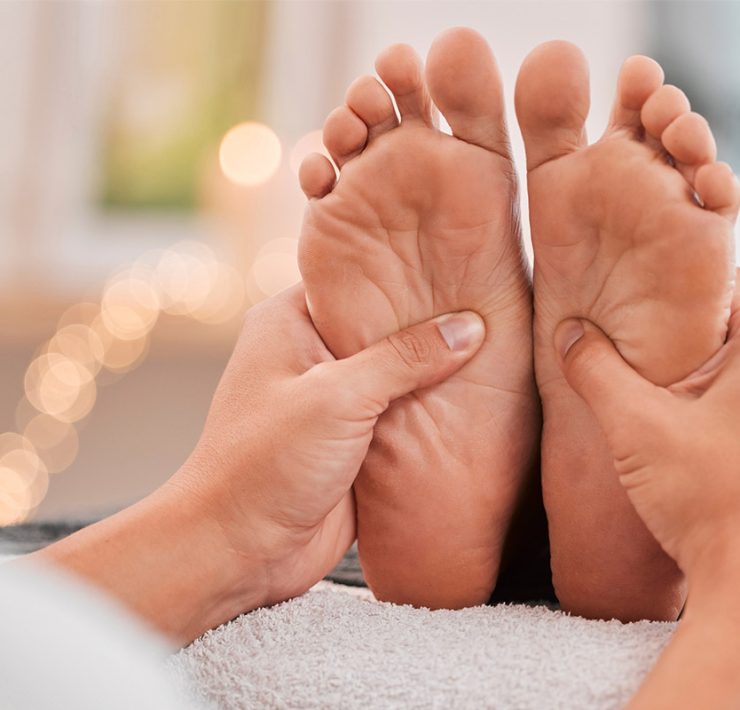Fibromyalgia is a syndrome characterized by chronic and widespread body pain, heightened pain on specific so-called “tender points,” severe fatigue, trouble sleeping, numbness and tingling in limbs, increased sensitivity to noise, lights, or temperature, muscle spasm, memory impairment, and generalized “brain fog.” These symptoms are aggravated by weather, cold/drafty environments, and hormonal fluctuations (menstrual and menopausal). In some patients, fibromyalgia is associated with depression, anxiety, and PTSD, as well as osteoarthritis and rheumatoid arthritis.
Fibromyalgia diagnosis
Living with fibromyalgia can be difficult and draining. Before the first diagnostic criteria were established in 1990, misdiagnosis and/or no diagnosis at all were common. Most doctors were slow to give real credence to patients (mostly women) whose main symptoms included general pain, fatigue, and cognitive issues. The American College of Rheumatology revised its guidelines for diagnosis in 2010/2011 and again in 2016. Even today, with extensive education and information about fibromyalgia, it’s estimated that as many as two-thirds of patients are misdiagnosed.
About 90% of those diagnosed with fibromyalgia are women, although the condition can also affect men and children. The reason for this discrepancy is the role of estrogen in fibromyalgia. While estrogen tends to suppress pain, a woman’s estrogen production varies greatly with the ebb and flow of her menstrual cycle, resulting in greater or lesser pain. Men are generally less sensitive to fibro pain and tend to get fewer and milder symptoms. Their reported discomfort lasts for shorter periods of time and occurs less often.
Medical treatments for fibromyalgia
Prescription medication is often the first treatment offered after diagnosis. Antidepressants such as Lyrica/pregabalin and anti-seizure drugs such as Cymbalta/duloxetine have been prescribed since 2007, and are thought to act on the nervous system to reduce pain impulses to muscles. In some cases, opioid drugs are prescribed, particularly in combination with other medications/therapies when initial treatments haven’t been effective. There are recent studies that indicate certain viruses such as herpes simplex can contribute to fibromyalgia, either as a primary or secondary cause. Some patients being treated with antiviral medication do report significant improvement in their symptoms.
Alternative treatments for fibromyalgia
Complementary and alternative treatments for fibromyalgia are almost as varied as individual patients, ranging from acupuncture to Zen meditation. Since stress is the most common trigger for fibromyalgia flare-ups, many doctors suggest cognitive or behavioral therapy in addition to – or in place of – medication. Patients may also receive acupuncture, which a recent study has shown to be particularly effective in a group setting (often called community acupuncture). Other roads to stress reduction include water therapy, meditation, and yoga.
Food matters
Food has a significant effect on fibromyalgia symptoms. There are a lot of recommendations that advocate eliminating all artificial sweeteners, preservatives, caffeine, sugar, and GMO foods. Anecdotal evidence is available everywhere in the form of personal blogs, YouTube videos, and books. The bottom line of food’s effect on fibromyalgia is that everyone’s body is unique, and reacts in its own way to the food it consumes. Factors such as ethnicity, age, gender, climate, and even religious background act strongly on our food history and reactions; it’s only natural that the effectiveness of dietary changes will vary widely.

Massage for fibromyalgia
Massage can be a very effective treatment to reduce fibromyalgia symptoms and the frequency of flare-ups. Massage therapy acts directly on the three systems in the body most affected by fibromyalgia: muscles, connective tissue, and the nervous system. The opening strokes of a massage warm and soothe the muscles, increasing blood flow and pliability. Massage movements flush metabolic by-products and inflammatory chemicals out of the tissue and into the bloodstream for disposal by the kidneys.
Connective tissue, also called fascia, surrounds our bones and weaves in and out of every muscle in our bodies. Because connective tissue lacks a blood supply, it relies on movement to keep it flexible. Those with fibromyalgia can equate movement with pain and therefore restrict their movements. Unfortunately, the nature of connective tissue causes it to lose flexibility if it becomes immobile. Massage moves fascia manually, increasing the mobility of this vital tissue and often decreasing pain.
The nervous system has a major influence on fibromyalgia pain, as stress contributes to the majority of flare-ups. Massage helps activate the parasympathetic nervous system to relax the body and cause the release of calming neurotransmitters. Massage therapists are attentive and compassionate by nature, and their focused physical presence can create an atmosphere of tranquility and relief, deepening the parasympathetic response.
Massage techniques that alleviate fibromyalgia
With so many types of massage therapy available, which are the most effective for fibromyalgia? Just as there is no single cause of fibromyalgia flare-ups, there is no one type of massage that will be effective for everyone. The massage therapist and client must work as a team to find the best combination of technique, pressure, and environment. The depth of pressure is probably the first thing that will dictate what type of massage technique to try. Some clients are sensitive to the lightest touch, making gentle Swedish massage effective for its relaxing and restful aspect, while still being therapeutic. Some clients receive greater benefits from firmer pressure, more muscle manipulation, and even deep tissue techniques. It’s critical that the client and a massage therapist communicate throughout the massage in order to establish the best comfort level.
Once a balanced and effective pressure range is found, the potential for finding pain reduction and relief is significant. Myofascial and active release techniques work deeply into the connective tissue and can be extremely helpful. Trigger point and neuromuscular therapies utilize varying pressure, but always involve activating painful areas to be effective, something that may be counterproductive for certain clients. Occasionally simple stretching and range of motion movements are the best choices. Clients may also receive benefits from massage that does not work directly on the affected areas, such as foot reflexology and craniosacral therapy. These are sometimes preferred by clients who are highly sensitive to pressure.
Heat application through the use of table heaters, hot packs/towels, hot water bottles, hot stones, and even heat lamps can enhance the effectiveness of some massages; while others are better served by cold towels, ice packs, ice massage, and cold stones.
The environment can make or break a massage. Receiving a massage at home means that the client can choose the music (or silence), the lighting level, and room temperature, ensuring customized surroundings.
Read more: Use FSA and HSA Dollars for a Medical Massage from Zeel
Treat Sleep Issues & Insomnia with Sleep Massage Therapy
Treating Sleep Apnea with Massage: Everything You Need to Know







